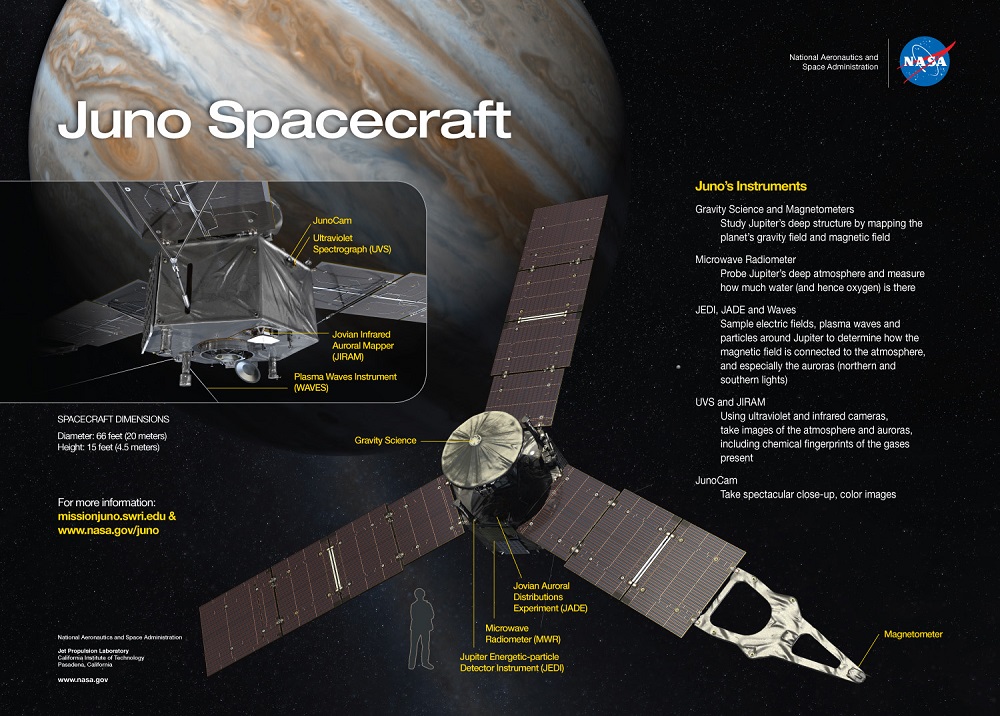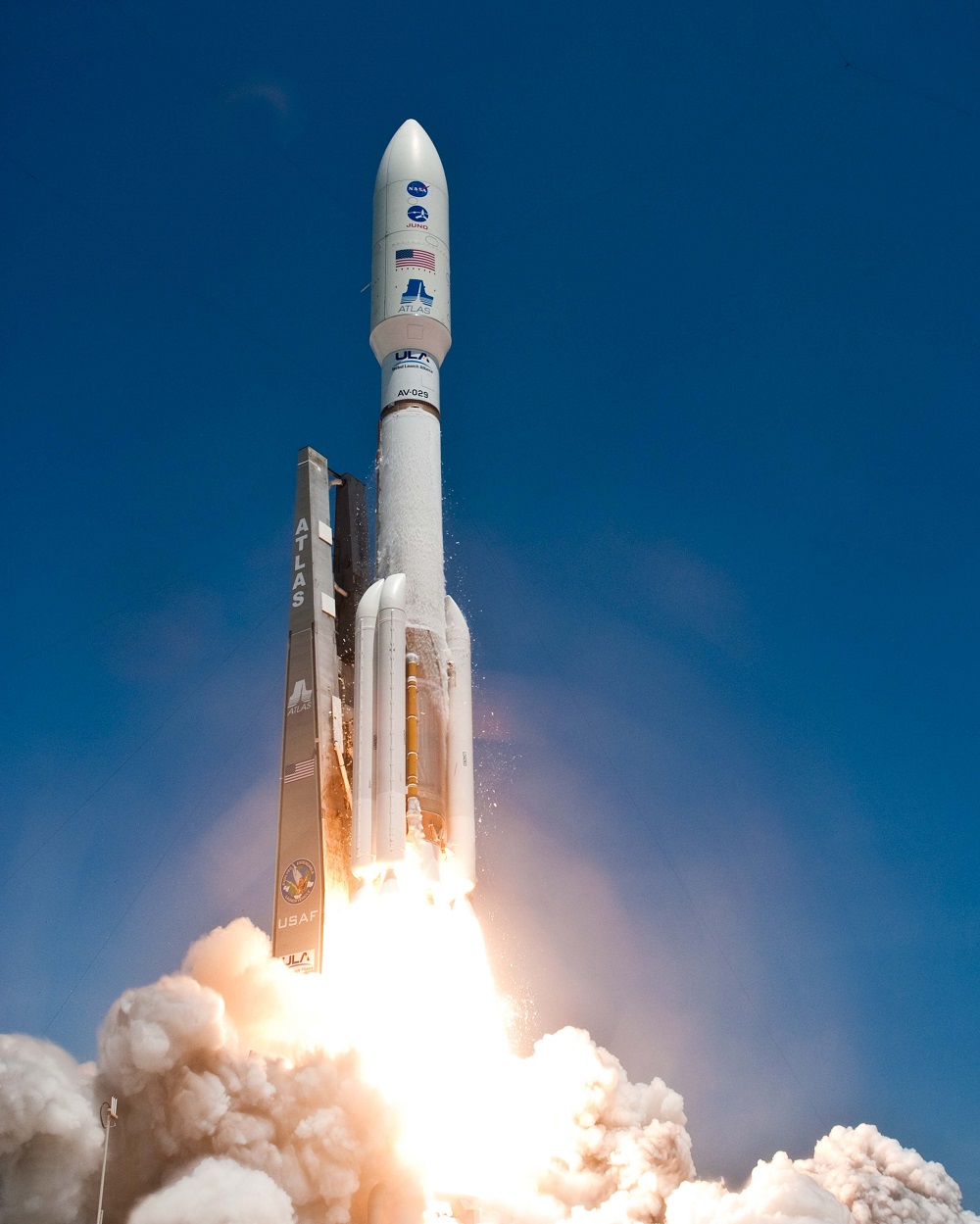NASA’s Juno mission to Jupiter is by far one of the Agency’s more exciting recent operations — in just a few days it will officially reach its destination and begin sending data back about the Earth’s neighboring gas giant.
In the meantime, we can enjoy a preview of what’s to come as Juno officially settles in to orbit.

For example, the spacecraft just recently crossed over Jupiter’s “bow shock” and entered its magnetosphere. Basically, this means it crossed the boundary from the Sun’s magnetic field into Jupiter’s domain. In this tiny area, the charged particles making up solar winds run into the planet’s invisible shield, if you will, at supersonic speeds. The resulting sound is somewhat like a sonic boom.
“The bow shock is analogous to a sonic boom,” said William Kurth of the University of Iowa in Iowa City, lead co-investigator for the Waves investigation. “The solar wind blows past all the planets at a speed of about a million miles per hour, and where it hits an obstacle, there's all this turbulence.”
It took Juno about two hours to cross this threshold, and the Jet Propulsion Laboratory was able to pinpoint the moment it began this journey:
“We've just crossed the boundary into Jupiter's home turf,” said Juno Principal Investigator Scott Bolton of Southwest Research Institute, San Antonio. “We're closing in fast on the planet itself and already gaining valuable data.”
What’s specifically interesting about this transition from solar winds into the magnetosphere is that while it was expected to occur at some point in the spacecraft’s journey, the complexity of the boundary between these two regions was surprising; in fact, several of Juno’s instruments reported unusual signatures before and after the small crossing.
“This unusual boundary structure will itself be the subject of scientific investigation,” said Barry Mauk of the Johns Hopkins University Applied Physics Laboratory, Laurel, Maryland, who is the instrument lead for the Jupiter Energetic-Particle Detector Instrument (JEDI) on Juno.
The next day, the Lab released an audio clip of Juno’s transit into the lower density of the magnetosphere:
The difference in sound can explained as such: as Juno was speeding along through the solar winds, it was doing so in an environment that has about 16 particles per cubic inch; once it crossed into the magnetosphere, the density was about a hundredfold less. It will increase again inside the magnetosphere, as Juno gets closer to the planet and how, exactly, these particles travel under the control of the planet’s magnetic field will be one type of evidence that NASA and JPL researchers can use to better understand Jupiter’s interior.
It’s all just an early taste of what’s to come – on July 4, the spacecraft will start up its main engine to begin slowing down its 165,000 miles per hour speed to a more conservative speed, for the purpose of safely entering orbit around Jupiter. This is nearly five years after its initial launch in August 2011 from Cape Canaveral, Florida.

And in just a few months, once it has officially settled in, the spacecraft will begin skimming the planet’s polar cloud tops and capturing photos of its enormous geomagnetic storms at an altitude of approximately 3,100 miles . . . and it’ll be doing all of this while under the physical duress of being exposed to the planet’s powerful radiation belts.
For ongoing mission updates, visit the Jet Propulsion Laboratory
Advertisement
Learn more about Electronic Products Magazine





